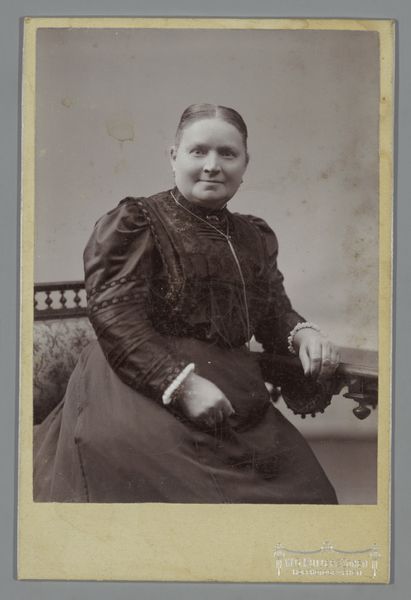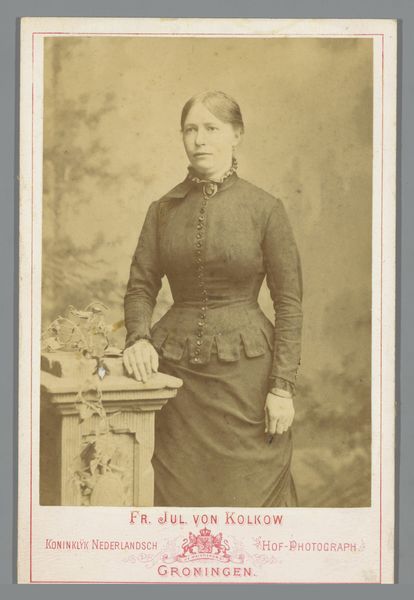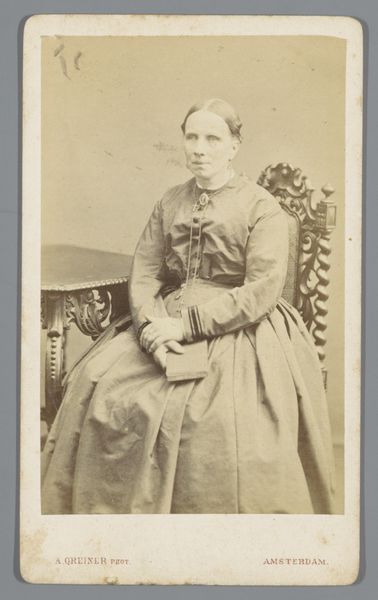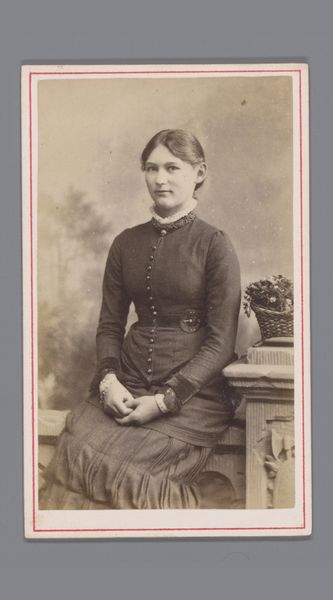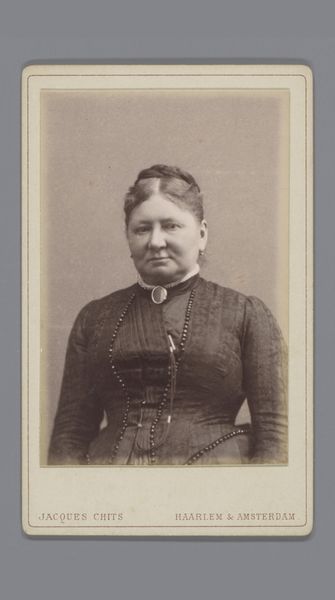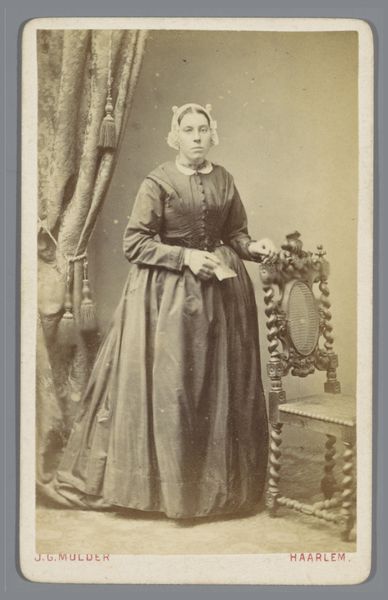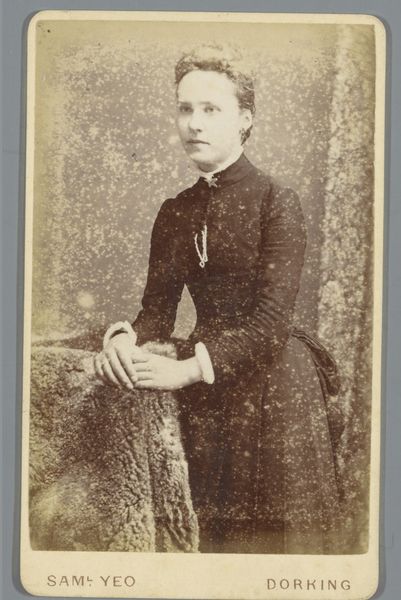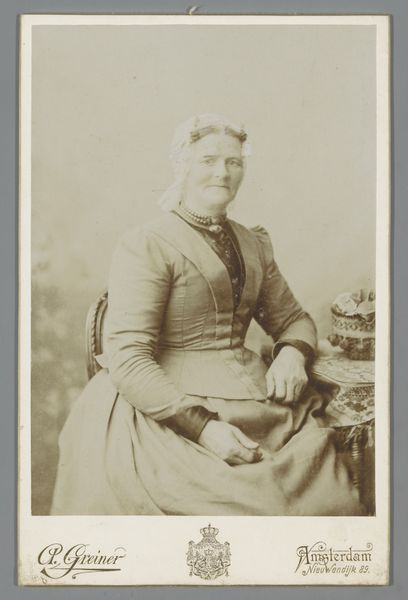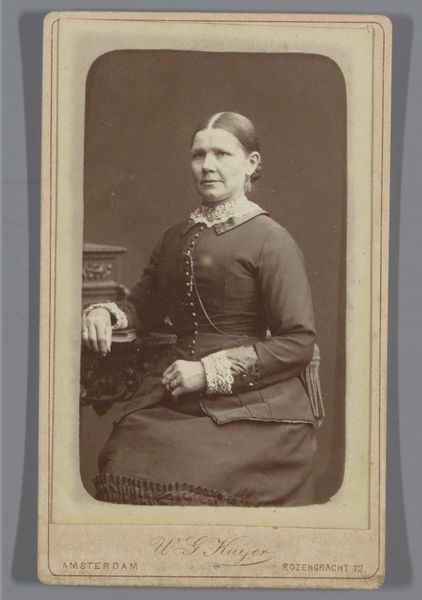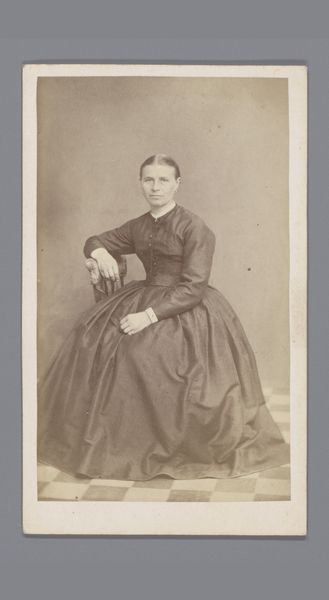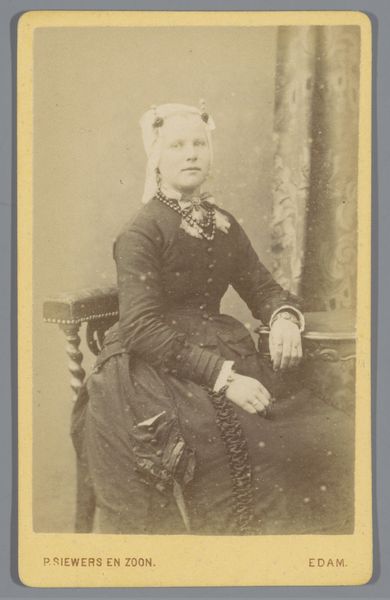
photography
#
portrait
#
photography
#
historical fashion
#
genre-painting
Dimensions: height 103 mm, width 64 mm
Copyright: Rijks Museum: Open Domain
Editor: So, this photograph is titled "Portret van een onbekende vrouw, leunend over een stoel," placing it between 1861 and 1890. It’s by Albert Greiner and currently held at the Rijksmuseum. What strikes me is how staged it feels. What can you tell me about it? Curator: The staged nature you perceive is key. Photography during this era, particularly portraiture, was heavily influenced by established painting traditions, including genre-painting. Consider the socio-economic factors; access to photography signaled a certain level of bourgeois respectability. How does that affect our understanding of who this woman is, or who she is perceived to be? Editor: I hadn’t thought about the economic aspect. Does that inform the way she is posing in that elaborately detailed dress? Curator: Exactly! The sitter’s pose and clothing become crucial visual markers. They speak to societal expectations around femininity and status. Do you notice any tension between the stiffness of the pose and what might be read as a 'natural' or 'relaxed' presentation? Think about how women were often constricted – both physically and socially – by these expectations. Editor: I see that. The outfit is very ornamental and restricting, almost like a uniform that signifies an upper-middle-class existence. Perhaps there’s a lack of authenticity? Curator: That is certainly one possible conclusion. Perhaps a more relevant way of interpreting the image would be to contemplate to what extent "authenticity" was available for women of that time? I find it especially relevant to reflect on our relationship to our own image through her. What lessons about female identity does it hold? Editor: I never considered it that way! This helps understand that the image reflects social constraints, even if they're not immediately visible. It’s more complex than just a simple portrait. Curator: Precisely. These images are products of – and contribute to – larger social power structures and gender roles. It's this dialogue between art and its historical context that truly enriches our understanding.
Comments
No comments
Be the first to comment and join the conversation on the ultimate creative platform.
